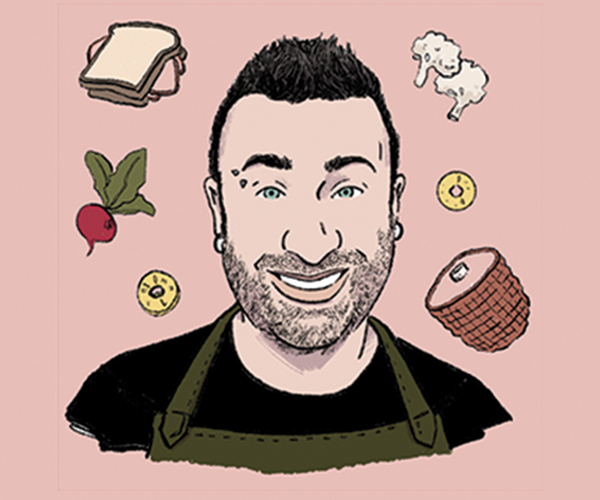Petite porcelain saltcellars sit in the center of the tables at Parallax filled with fine crystals of salt that pour like sparkling sand off the end of a spoon. Salt, in some form, is expected at every table in any restaurant, but it’s more than functional at this hip Tremont hangout. Zack Bruell, executive chef and co-owner, makes it part of the environment and its unusual presentation draws questions.
“What is this?” the lady asks the waiter.
“It’s sea salt,” he replies.
“Oh, from France,” she says, returning to the wine list.
“Actually, it’s mined in Utah,” he says.
Curious, she leans in to learn more ...
In fact, all salt is sea salt — a rather simplistic statement about a complex and essential ingredient. Whether it’s raked from shallow tide pools in Bali, gathered from high in the Andes or plucked from vast lagoons in southwest France, salt is a product of a living ocean or a remnant of an ancient, dried-up sea. Bruell, happy to skew the norm, prefers his sea salt mined from the depths of the earth.
In Redmond, Utah, about 150 miles south from the Great Salt Lake, a vast salt deposit is left from a Jurassic sea evaporated long ago. A cap of clay formed from thick layers of ancient volcanic ash sealed the deposit, keeping modern pollutants out and protecting massive veins of salt that branch out for a mile in every direction, but mostly down.
From the culinary seams, Redmond Min- erals, a Utah mining company, harvests RealSalt, a brand, but quite literally, real salt. Beautiful chunks of salt mottled with shades of pink, cloudy whites and an occasional fleck of black goes directly to the customer, whether a hand-selected softball-size chunk that can be grated like Parmesan, angular kosher-style grains, coarse gravel-like bits or a fine powder that looks like glitter. Aside from crushing the salt into the different size grains, it is processed without any bleaching, filtering or refining.
Company spokesman Michael Mumford says the mine has been tapped for culinary salts since 1993, but the salt reflects conditions that existed before man appeared. “At the time the deposits were formed, the water source was unpolluted, so the salt that was left is very pure,” he says. The American Culinary ChefsBest, an independent tasting conducted by a panel of accredited chefs, rated it the “Best Tasting Natural Salt” for the past five years.
Take a pinch or grain of RealSalt on the tongue, and wait a few seconds. You’ll detect a sweet sensation at the tip of the tongue, a pleasant saltiness on either side of the tip and a stony or mineral flavor. “That,” Mumford insists, is “the taste of salt.”
Scattered throughout the salt are traces of minerals, 52 in all by chemical analysis, from natural occurrences of calcium, iron and iodine to a miniscule trace of gold — hardly worth a mention except that it is gold.
Bruell’s salt of choice is a great conversation starter at the table. It aligns itself with the cool character of the restaurant and it gives Bruell and his staff an opportunity to educate and talk with guests about food.
“I’ve spent 25 years working on the cooking style that defines Parallax,” says Bruell, which he describes as a little fusion with a lot of French technique revolving around Eastern ingredients. Part of the process is not only choosing a good salt but also knowing how to use it to highlight some flavors or downplay others.
“We salt on a bell-grade curve,” Bruell explains. “On one end, lack of salt results in a dull, flat flavor. At the top of the curve, the right amount delivers multidimensional flavors. On the downside of the curve, all you’ll taste is salt,” he says. “All we want to do is slowly draw out the flavor, not drown it out.” So he salts in intervals: salt, taste, salt, taste, adjust.
Salt should create a subtle mouthfeel. It adds texture for ingredients such as lettuces and tomatoes and finishes a dish such as tuna carpaccio with flair. It can also add an element of surprise where it’s least expected — dessert. “Pair it sparingly in desserts with ingredients that have a high acid base,” coaches Bruell.
Like a rare, extra-virgin olive oil, it would be a waste to dissolve the subtly colored angular grains of RealSalt to flavor pasta water. “That’s when you should grab the store-brand kosher salt,” says Bruell. “Save the beautiful salt for creating impressions.”
Fish, which is what Bruell wants Parallax to earn its reputation doing well, is one of the best reasons to reach for the good stuff. “Fish is supposed to taste like the sea, so bring out the sea salt,” he insists. “It’s the most natural pairing.”
Bruell’s short course in salting is a quick study. “Two common mistakes when it comes to salting are under-salting and over-salting,” he offers. “But the biggest mistake is not using any salt at all.”



